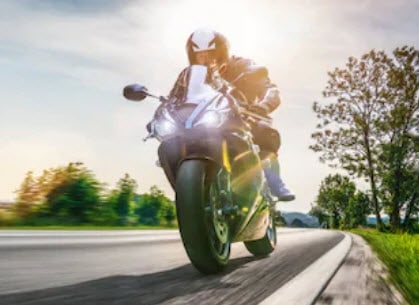
The landmark Hurt Report concluded that about a third of the fatal motorcycle wrecks in the United States are left-turn wrecks. Typically, a tortfeasor (negligent driver) is waiting to make an unprotected left turn against traffic, usually at a red light or while leaving a private residence or business. The tortfeasor doesn’t see an oncoming motorcycle and turns directly into the rider’s path. Stunt men spring right up after these collisions in the movies. In the real world, the riders often don’t get up at all.
Tortfeasors have plenty of excuses in these situations. They usually tell first responders that the rider “came out of nowhere” and the crash was therefore inevitable. These excuses usually don’t hold up in court. In fact, in the hands of a skilled Columbia motorcycle accident lawyer, such a statement is basically an admission that the tortfeasor didn’t maintain a proper lookout. As a result, the tortfeasor is clearly responsible for the wreck and liable for damages.
Building a Case
Motorists waiting to turn left against traffic must usually yield the right-of-way to all other motorists, including motorcycle riders. However, although the law on this point is clear, emergency responders often don’t issue citations in these situations. They’d rather let insurance companies and Columbia personal injury attorneys resolve things in civil court.
Therefore, victim/plaintiffs must normally use the ordinary negligence doctrine to obtain compensation for their injuries. This doctrine has four basic elements in South Carolina:
- Duty: Most drivers have a duty of reasonable care in most cases. This duty includes not only a responsibility to yield the right-of way, but also an obligation to generally drive defensively and avoid accidents if possible.
- Breach: Tortfeasors breach their duty of care if their behavior is below the standard of care. If a tortfeasor has a hard time seeing oncoming traffic for whatever reason, the tortfeasor should slow down and be more careful, not speed up and hope for the best.
- Cause: Poor visibility, poor weather, and other such external conditions often contribute to car crashes. Driver error causes these wrecks. Victim/plaintiffs must also prove foreseeability (possibility) of injury. A crash is a foreseeable consequence of reckless driving.
- Damages: The compensation in a motorcycle crash claim usually includes money for economic losses, such as medical bills, and noneconomic losses, such as pain and suffering.
Victim/plaintiffs must prove all these elements by a preponderance of the evidence, or more likely than not. Evidence in a motorcycle wreck claim usually includes a combination of the police accident report, witness statements, and medical bills.
Possible Defenses
Generally, motorcycle riders see vehicles pulling out in front of them at the very last instant. Insurance company lawyers often try to use this fact to invoke the last clear chance defense.
According to this obscure legal principle, the party with the last clear chance to avoid a wreck, which in this case is the motorcycle rider, is the party that’s legally responsible for damages.
There’s a big difference between the last clear chance and any possible chance. As mentioned, riders sometimes have a split second before impact. However, if they make sudden moves, they usually lose control of their bikes. Additionally, these wrecks often happen so fast that the rider doesn’t have a reasonable amount of time to do anything.
The motorcycle helmet defense is also common in these claims. If the victim wasn’t wearing a helmet, the insurance company may be able to reduce the victim’s compensation. This defense only applies in very limited situations.
Count on a Tough-Minded Richland County Lawyer
Injury victims are entitled to significant compensation. For a free consultation with an experienced personal injury lawyer in Columbia, contact the Marc Brown Law Firm. The sooner you reach out to us, the sooner we start fighting for you.
Source:
one.nhtsa.gov/people/injury/pedbimot/motorcycle/00-nht-212-motorcycle/research9-11.html